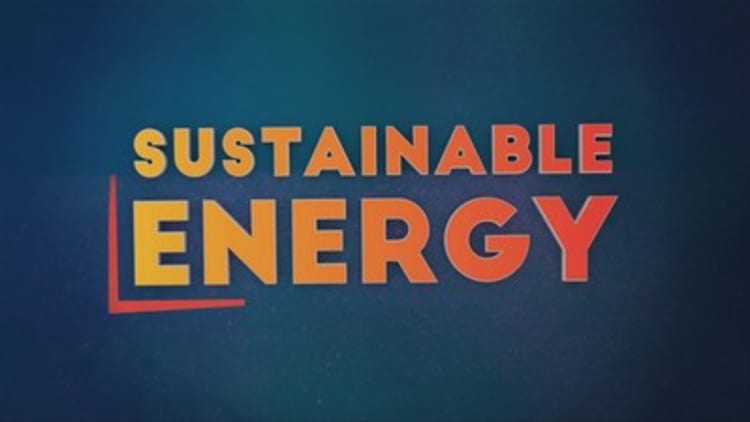
Everyone loves a good dance. But could a boogie also be a source of energy? Netherlands-based Energy Floors has designed an energy generating dance floor.
Aptly named the Sustainable Dance Floor, the first model was launched in 2008 at a nightclub in Rotterdam.
"We started by thinking 'how can you make nightclubs more sustainable?'" Michel Smit, CEO of Energy Floors, told CNBC's Sustainable Energy. "In one of the first brainstorms someone said, 'why not use the energy of the people to make it sustainable?'" he added.
"So why not have 1,000 people jumping, running, dancing, going crazy at night – why don't we use that energy to make a positive impact? And that's how we started developing these energy generating floors."
Today, the company has developed a range of products all designed to generate power from peoples' movement, from the dance floor to the Sustainable Energy Floor, which is designed for high footfall areas, and a kinetic solar energy floor.
According to Energy Floors, the Sustainable Dance Floor's "modules" flex when stepped on, creating movement that a small internal generator turns into electricity. Each module – measuring 75x75x20 centimeters – can generate up to 35 watts of "sustained output."
"When you install an energy floor, then the public is part of the solution, they are part of the energy contribution of that location, which makes them much more involved," Smit said.
The amount of energy that the company's products can create depends on a range of factors – including weight and the type of movement. However, one step on the Sustainable Energy Floor can generate between 2 and 20 joules.
In 2012 the Sustainable Dance Floor generated over one million joules, or one 'mega joule', in a single evening at a nightclub in Murcia, Spain.
To put this in perspective, 3.6 mega joules are equal to one kilowatt hour which would, according to British Gas, allow someone to watch TV for seven hours or charge 285 mobile phones for an hour. The kinetic energy created by the Sustainable Dance Floor is turned into electricity that powers the dance floor's lights.
Speaking about the technology used in the dance floor, Energy Floors' Johan Paulides said, "If you step on it, then you… have a vertical movement and from that vertical movement we create a very, very high rotational movement which is in the order of 1,000's of rpm," he said.
"From that we create the electrical energy that can be used," he added.
"In the end we feel it's the people that have to create a sustainable world, and this is just one of the innovations that makes… [that] step," Smit added.




